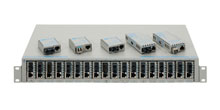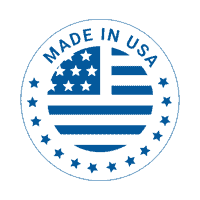- Products
- PoE Media Converters and Switches
- Ethernet & PoE Switches Product Selector
- Multi-Gigabit Ethernet and PoE Switches
- PoE PSE Commercial Switches
- PoE PSE Industrial Fiber Switches
- PoE Industrial Copper Extenders
- PoE Powered Media Converters
- PoE PSE Media Converters
- PoE Extenders & Injectors Product Selector
- Pluggable Transceivers Product Selector
- Single Pair PoE Products
- Product Lines

- iConverter Managed Multi-service Platform
- Copper to Fiber Media Converters
- Ethernet Media Converters
- 10 Gigabit Copper-to-Fiber
- 10/100/1000 Copper to 10 Gigabit Fiber
- 10/100/1000 Copper-to-Fiber with Integrated Management
- 10/100/1000 Industrial Copper-to-Fiber with Integrated Management
- 10/100/1000 Copper-to-Fiber with VLAN
- 10/100/1000 Dual Media Converter with VLAN
- Gigabit Copper-to-Fiber
- 10/100 Copper-to-Fiber with Integrated Management
- 10/100 Industrial Copper-to-Fiber with Integrated Management
- 10/100 Copper-to-Fiber with VLAN
- 10/100 Copper-to-Fiber
- Fast Ethernet Copper-to-Fiber
- Fast Ethernet Redundant Links
- 10Mbps Copper-to-Fiber
- 10Mbps Copper to Coax
- TDM Media Converters
- Serial Media Converters
- Ethernet Media Converters
- Fiber to Fiber Media Converters
- 10 Gigabit Fiber-to-Fiber Converter and Transponder
- 10 Gigabit Industrial Converter and Transponder
- SFP-to-SFP Fiber Converter and Transponder
- SFP-to-SFP Industrial Fiber Converter and Transponder
- Gigabit Fiber to-Fiber with 3 Rs
- 100/1000 Fiber-to-Fiber with 3 Rs
- Gigabit Fiber-to-Fiber
- Fast Ethernet Fiber-to-Fiber with 3 Rs
- Fast Ethernet Fiber-to-Fiber
- OC-3/STM-1 Fiber-to-Fiber
- OC-12/STM-4 Fiber-to-Fiber
- Carrier Ethernet Network Interface Devices
- CE 2.0 - 10G Demarcation NID
- CE 2.0 - 10/100/1000 Mult-port NID
- CE 2.0 - 10/100/1000 Mult-port NID with PoE
- CE 2.0 - 10/100/1000 8-Port NID
- CE 1.0 Service OAM - 10/100/1000 NID
- CE 1.0 Link OAM - 10/100/1000 Copper-to-Fiber NID
- CE 1.0 Link OAM - 10/100 Copper-to-Fiber NID
- CE 1.0 Link OAM - Gigabit Fiber-to-Fiber NID
- CE 1.0 Link OAM - Fast Ethernet Fiber-to-Fiber NID
- CWDM Multiplexers
- T1/E1 Multiplexers
- Ethernet Switch Modules
- Management System
- Chassis Options

- 1-Module Industrial Chassis

- RuggedNet Industrial Switches and Extenders
- Industrial PoE PSE Fiber Switches
- Multi-Gigabit Managed Industrial PoE+/BT Switches
- Multi-Gigabit Unmanaged Industrial PoE+/BT Switches
- 10G Managed 802.3bt PoE Switches
- 10G Unmanaged 802.3bt PoE Switches
- 10G Managed PoE+ Switches
- 10G Unmanaged PoE+ Switches
- 1G Managed PoE+ Switches
- 1G Unmanaged PoE+ Switches
- 1G Unmanaged 802.3bt PoE Switches
- 1G Managed 802.3bt PoE Switches
- Industrial SPE Switches
- Industrial Ethernet Switches
- Industrial PoE Copper Extenders
- Industrial Power Supplies

- OmniConverter Media Converter, Switches and Extenders
- PoE PSE Media Converters
- 10G Multi-Gigabit / Multi-Rate PoE Media Converter
- 10G Multi-Gigabit / Multi-Rate Media Converter
- 10/100 Multi-port PoE+ Media Converter
- 10/100 PoE+ Media Converter
- 10/100/1000 Multi-Port PoE+ Media Converter
- Industrial 10/100/1000 Multi-Port PoE+ Media Converter
- 10/100/1000 PoE+ Media Converter
- 10/100/1000 PoE++ 60W-100W Media Converter
- Industrial 10/100 Multi-port PoE+ Media Converter
- 1U Rack-Mount Shelf
- PoE PSE Compact Switches
- Multi-Gigabit Managed PoE+/BT Switches
- Multi-Gigabit Unmanaged PoE+/BT Switches
- 10G Managed 802.3bt PoE Switches
- 10G Unmanaged 802.3bt PoE Switches
- 10G Managed PoE+ Switches
- 10G Unmanaged PoE+ Switches
- 1G Managed PoE+ Switches
- 1G Unmanaged PoE+ Switches
- 1G Managed 802.3bt PoE Switches
- 1G Unmanaged 802.3bt PoE Switches
- Ethernet Switches
- Single Pair Ethernet (SPE)
- PoE Copper Extenders
- PoE Injectors

- miConverter Unmanaged Miniature Media Converters
- 10/100/1000 Copper-to-Fiber
- Industrial 10/100/1000 Copper-to-Fiber
- 10/100/1000 Ultra-Compact Copper-to-Fiber
- Gigabit Copper-to-Fiber
- 10/100/1000 Copper-to-Fiber PoE Powered
- 10/100 Copper-to-Fiber
- 10/100 Ultra-Compact Copper-to-Fiber
- 10/100 Copper-to-Fiber PoE Powered
- 18-Module Chassis
- Industrial 10/100 Copper-to-Fiber PoE Powered

- FlexSwitch Compact Switches
- Solutions
- Company
- Support
- How to Buy
What is the Difference Between a PoE Media Converter and a PoE Extender?

While both media converters and PoE extenders can be used to expand your network capabilities, they serve slightly different purposes. Here's a breakdown of the key differences:
What is a PoE Media Converter?
Media converters act as intermediaries in network setups, bridging the gap between different types of communication media. These devices seamlessly convert data signals from one format to another (fiber to copper for instance). Media converters ensure smooth communication between disparate network components, from fiber optics to copper cables and vice versa.
PoE media converters convert fiber to copper cable, and also inject Power over Ethernet onto the data line to provide power and data to a remote device with a single twisted pair cable. They will typically include one or two RJ-45 PoE ports to connect remote devices, and a fiber port (SC, ST, LC or SFP) for the fiber uplink.
PoE Media Converters are valuable network tools, as they allow you to power a remote device like a camera or Wifi access point in an area where no local power may be available. This save time and money from having to hire a licensed electrician to bring power to the device. It can all be done over one Cat5 or greater UTP cable.
Key Characteristics
Versatility: PoE Media Converters exhibit remarkable versatility, supporting various data formats and transmission speeds. This flexibility makes them invaluable in mixed-media environments, providing adaptability for evolving network infrastructures.
Signal Quality Preservation: One of the standout features of media converters is their ability to preserve signal quality during conversion. This ensures minimal data loss and maintains high integrity in the transmitted information.
What is a PoE Extender?
On the other hand, Power over Ethernet (PoE) extenders focus on extending the reach of power and data signals in shorter distance network installations. These devices also inject power into Ethernet cables, enabling the transmission of both power and data over extended distances.
Key Characteristics
Extended Power Range: PoE extenders amplify the power delivery capabilities of standard PoE, allowing devices to operate at extended distances from the power source. This is particularly beneficial in outdoor surveillance systems and large-scale installations.
Seamless Integration: PoE extenders seamlessly integrate with existing network infrastructures, providing a cost-effective solution for expanding network coverage without additional power sources.
PoE Media Converters & PoE Extenders Key Differences
- Signal Conversion: PoE Media converters focus on signal type conversion (including from fiber to copper), while PoE extenders prioritize extending PoE reach with all UTP cables.
- Distance: PoE Media converters offer much longer distances (fiber options), while PoE extenders typically reach under 500 meters.
- Cost: PoE Media converters can be more expensive that PoE Extenders, especially fiber-based models.
- Applications: PoE Media converters are more versatile for different network needs, while PoE extenders are specifically for remote PoE devices.
Choosing the Right Option Between a PoE Media Converter and a PoE Extender
Choosing between a PoE Media Converters and a Power over Ethernet (PoE) extender requires careful consideration. Both devices play crucial roles in enhancing network performance, but their distinct functionalities cater to different needs.
Understanding Your Network Infrastructure
Before making a decision, assess your existing network infrastructure. If you use both copper and fiber optic connections for communication, a media converter comes in quite handy. It excels at bridging the gap between diverse media types, ensuring seamless communication.
Analyzing Power and Data Transmission Needs
A PoE Extender becomes a compelling choice if your priority lies in extending power and data signals over Ethernet cables. Particularly beneficial for outdoor installations and applications with extended transmission distances, PoE Extenders amplify power delivery capabilities, providing a cost-effective solution.
Considering Integration and Compatibility
Consider how seamlessly the chosen device integrates into your existing network setup. PoE Media Converters showcase versatility in supporting various data formats and transmission speeds, making them adaptable to evolving infrastructures. On the other hand, PoE Extenders seamlessly integrate into networks, extending power and data without compromising performance.
Factoring in Cost-Effectiveness
While both options contribute to network optimization, assessing the cost-effectiveness of each is crucial. PoE Media Converters offer versatility, making them suitable for mixed-media environments. Still, PoE Extenders provide a budget-friendly solution for extending power and data reach without additional power sources.
FAQs
1. What is the difference between a media converter and an Ethernet extender?
A media converter primarily focuses on converting data signals between different media types, such as fiber optics and copper cables. It acts as a linguistic translator, ensuring seamless communication in mixed-media environments. On the other hand, an Ethernet extender, or PoE extender, extends the reach of both power and data signals over Ethernet cables. While media converters specialize in signal conversion, Ethernet extenders amplify power delivery capabilities for extended transmission distances.
2. What is the difference between a media converter and an Ethernet switch?
The key distinction lies in their functions within a network. A media converter is designed to convert data signals between different media types. In contrast, an Ethernet switch is a networking device that effectively manages data flow by connecting several devices within a Local Area Network (LAN). While media converters facilitate communication between diverse media, Ethernet switches focus on efficiently routing and distributing data within a network.
3. Does a media converter need a power supply?
Yes, media converters typically require a power supply to function. While they may sometimes derive power from the connected devices through the data cables, many media converters come with external power adapters. This ensures a stable and consistent power source for the conversion process, preserving signal quality and allowing the device to operate effectively in various network setups.
4. What is a PoE media converter?
A PoE media converter combines the functionalities of a media converter with Power over Ethernet (PoE) capabilities. It not only converts data signals between different media types but also injects power into Ethernet cables, enabling the transmission of both power and data over extended distances. This integration is particularly useful in limited power sources, offering a streamlined solution for optimizing network performance without additional power infrastructure.
5. What is the speed of a media converter?
The speed of a media converter varies based on the specific model and its compatibility with different transmission speeds. Media converters are available at various speeds to accommodate diverse network requirements. It's crucial to select a media converter that aligns with the speed requirements of the connected devices and the overall network infrastructure for optimal performance.
Final note
In conclusion, understanding the difference between PoE Media Converters and PoE extenders is crucial for making informed decisions in network setups. While PoE media converters excel in signal conversion, distance and versatility, PoE extenders specialize in extending power and data reach over Cat 5 or better cabling without the use of fiber cables.
If you are still unsure which one of these devices is practical for your network, contact us! Omnitron Systems provides 24/7 pre-sales support and free technical support to assist customers with network designs and product selection. Call us now.
Furthermore, Omnitron Systems product specialists collaborate extensively with end-users, integrators, and channel partners to pinpoint and suggest the most cost-effective solutions for new network designs and upgrades to existing networks. Schedule a Free Network Design Session









